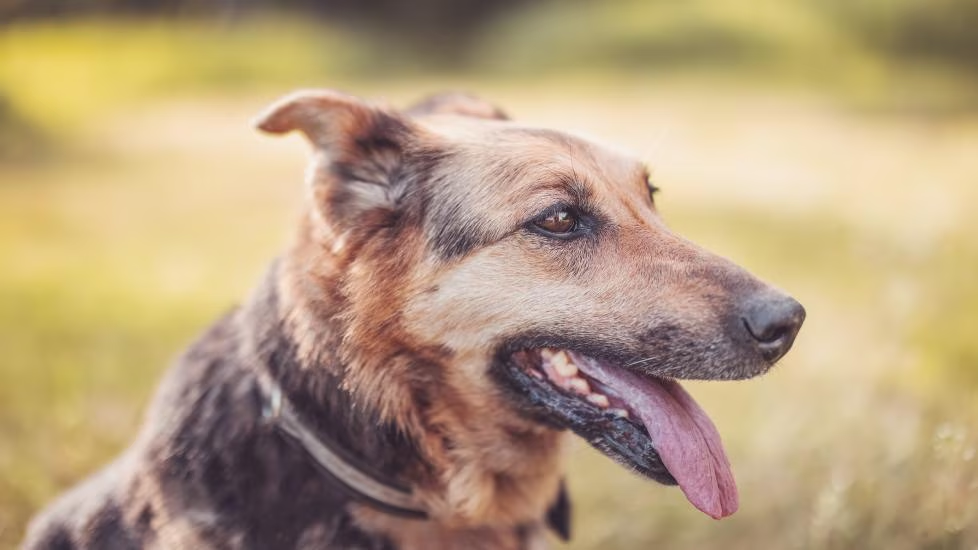As dogs age, they may experience changes in their behavior, cognition, and health, much like humans. One of the most concerning conditions in senior dogs is canine cognitive dysfunction (CCD), commonly referred to as dog dementia. Understanding the symptoms of canine dementia is crucial for ensuring your pet’s comfort and well-being during their golden years.
Canine dementia is a progressive condition that affects a dog’s brain function, leading to confusion, memory loss, and changes in behavior. While it can’t be cured, early recognition of the symptoms can help manage the condition and improve your dog’s quality of life. Here are the seven most common signs of dementia in dogs and how you can address them.
1. Disorientation and Confusion
One of the earliest and most noticeable signs of canine dementia is disorientation. Your dog may seem lost in familiar surroundings, such as their own home or backyard.
- Examples of Disorientation:
- Standing on the wrong side of a door and not knowing how to get to the other side.
- Wandering aimlessly or staring into space.
- Getting “stuck” in corners or behind furniture.
- What You Can Do:
Maintain a consistent environment by keeping furniture and objects in the same place. Avoid rearranging your home, as changes can increase their confusion.
2. Changes in Sleep Patterns
Dogs with dementia often experience disruptions in their sleep-wake cycle. They may sleep more during the day and become restless or anxious at night.
- Why This Happens:
Cognitive decline affects the part of the brain responsible for regulating sleep, leading to insomnia or increased nighttime activity. - What You Can Do:
Create a calming nighttime routine, such as dimming the lights, playing soothing music, or using pheromone diffusers. Your veterinarian may also recommend medications or supplements to improve sleep quality.
3. Reduced Interaction with Family Members
A dog with dementia may become less interested in interacting with you or other pets. They might withdraw from activities they once loved, such as playing fetch or cuddling on the couch.
- Behavioral Signs:
- Ignoring commands or failing to respond when called.
- Appearing indifferent to your presence.
- What You Can Do:
Continue to engage with your dog using gentle encouragement and positive reinforcement. Short, low-stress activities can help maintain their social connection.
4. Loss of House-Training Skills
Even if your dog has been house-trained for years, dementia can cause them to forget where and when to relieve themselves.
- Symptoms of Accidents:
- Urinating or defecating indoors.
- Forgetting to signal when they need to go outside.
- What You Can Do:
Be patient and compassionate. Establish a regular bathroom schedule and use puppy pads or indoor dog toilets if needed. Praise them when they go in the correct location to reinforce positive behavior.
5. Increased Anxiety and Restlessness
Dogs with dementia may exhibit heightened anxiety, especially in unfamiliar or stimulating environments. They might pace, whine, or act agitated for no apparent reason.
- Triggers of Anxiety:
- Separation from family members.
- Changes in routine or surroundings.
- Loud noises or sudden movements.
- What You Can Do:
Provide a safe, quiet space for your dog to retreat to when they feel overwhelmed. Calming products, such as anxiety wraps or CBD supplements (consult your vet first), can also help alleviate their stress.
6. Repetitive Behaviors
Repetition is another hallmark of canine dementia. Dogs may engage in repetitive actions such as pacing in circles, licking objects, or barking without cause.
- Why This Happens:
Cognitive dysfunction can cause dogs to develop obsessive or compulsive behaviors. - What You Can Do:
Redirect their attention with interactive toys or activities. If the behavior becomes excessive, consult your veterinarian to rule out other potential medical issues.
7. Difficulty Recognizing Familiar People or Objects
As dementia progresses, your dog may struggle to recognize familiar faces, toys, or even their food bowl.
- Examples of Recognition Issues:
- Acting wary or frightened around family members.
- Ignoring toys or objects they once loved.
- What You Can Do:
Use consistent verbal cues and maintain a calm, reassuring presence. Avoid forcing interactions if your dog appears confused or frightened, as this may exacerbate their anxiety.
How Canine Dementia Is Diagnosed
If you suspect your dog is showing signs of dementia, it’s essential to consult a veterinarian. There’s no single test for CCD, but your vet can perform a thorough assessment to rule out other conditions, such as arthritis, hearing loss, or vision problems, that may mimic dementia symptoms.
Treatment and Management Options
While there is no cure for canine dementia, several strategies can help slow its progression and improve your dog’s quality of life:
- Dietary Support:
Foods rich in antioxidants, omega-3 fatty acids, and vitamins may support brain health. Look for senior dog food designed to promote cognitive function. - Medications:
Drugs like selegiline (Anipryl) are sometimes prescribed to enhance dopamine levels in the brain and improve cognitive function. - Mental Stimulation:
Keep your dog’s mind active with puzzle toys, scent games, or gentle training exercises. - Consistency:
Stick to a predictable routine for feeding, walking, and sleeping to minimize confusion. - Supplements:
Consult your vet about supplements such as SAM-e or phosphatidylserine, which may support brain health.
When to Consider Euthanasia
As heartbreaking as it may be, there may come a point when your dog’s dementia severely impacts their quality of life. If they no longer enjoy activities, experience frequent distress, or struggle with basic functions, euthanasia might be the kindest option. Discuss this decision thoroughly with your vet and family.
Final Thoughts
Recognizing the signs of dementia in dogs is the first step to providing the care and support they need. While the journey can be challenging, patience, compassion, and proactive management can make a significant difference in your pet’s quality of life.
If you notice any changes in your dog’s behavior or suspect dementia, consult your veterinarian as soon as possible. Early intervention can help slow the progression of symptoms and ensure your dog feels loved and cared for throughout their senior years.

